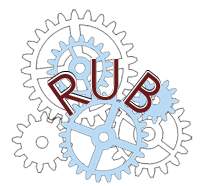Proszę używać tego identyfikatora do cytowań lub wstaw link do tej pozycji:
http://hdl.handle.net/11320/19106Pełny rekord metadanych
| Pole DC | Wartość | Język |
|---|---|---|
| dc.contributor.author | Banio, Adrianna | - |
| dc.date.accessioned | 2025-10-22T12:05:11Z | - |
| dc.date.available | 2025-10-22T12:05:11Z | - |
| dc.date.issued | 2021 | - |
| dc.identifier.citation | Resocjalizacja Polska Nr 22, 2021, s. 547-564 | pl |
| dc.identifier.issn | 2081-3767 | - |
| dc.identifier.uri | http://hdl.handle.net/11320/19106 | - |
| dc.description.abstract | Article present the possibilities of use dance classes and psychosocial factors in a specific environmental associated with among demoralized adolescents. In this paper presents research conducted on a group of adolescents whose behaviour is characterized by demoralization and whose commitment of criminal offences resulted in them becoming the subject of an confinement corrective measure, i.e. being placed in a youth educational centre. The Adjective Check List ACL created by H.G. Gough and A. Helibrun, as well as the Profile of Mood States (POMS) developed by McNair, Lorr and Droppleman were used in the research. After twelve weeks of systematic dance classes, the test was repeated and noticeable changes in self-perception of the surveyed girls were observed. The average values of 14 out of 37 scales of the ACL questionnaire after the end of the project differed significantly (p <0.05) compared to the results before the start of the project. Moreover, after each week of the project, a comparison of the survey results with the POMS questionnaire was carried out in terms of the severity of individual moods. The analysis shows that the subjects successively had a significant decrease in the level of all five negative states and an increase in positive mood. | pl |
| dc.language.iso | en | pl |
| dc.publisher | Fundacja Pedagogium | pl |
| dc.rights | Licencja Creative Commons Uznanie autorstwa 4.0 (CC-BY) | pl |
| dc.rights.uri | https://creativecommons.org/licenses/by/4.0/ | - |
| dc.subject | dance therapy | pl |
| dc.subject | art therapy | pl |
| dc.subject | physical activity | pl |
| dc.subject | adolescent | pl |
| dc.subject | self-image | pl |
| dc.subject | emotional states | pl |
| dc.subject | resocialization | pl |
| dc.subject | insulation | pl |
| dc.title | The impact of regular dance classes on self-image and emotional state of demoralized female adolescents | pl |
| dc.type | Article | pl |
| dc.rights.holder | Licencja Creative Commons Uznanie autorstwa 4.0 (CC-BY) | pl |
| dc.identifier.doi | 10.22432/pjsr.2021.22.31 | - |
| dc.description.Email | adrianna.banio@usz.edu.pl | pl |
| dc.description.Affiliation | University of Szczecin | pl |
| dc.description.references | Balassone, M. L. A social learning model of adolescent contraceptive behavior. Journal of Youth and Adolescence 1991, 20, 593-616, doi:10.1007/BF01537364. | pl |
| dc.description.references | Bakken, L.; Romig, C. Interpersonal needs in middle adolescents: Companionship, leadership, and intimacy. Journal of Adolescence 1992, 15, 301-316, doi:10.1016/0140-1971(92)90032-Z. | pl |
| dc.description.references | Bishop, J. A.; Inderbitzen, H. M. Peer acceptance and friendship: An investigation of their relationship to self-esteem. Journal of Early Adolescence 1995, 15, 476-489, doi:10.1177/0272431695015004005. | pl |
| dc.description.references | Bagwell, C. L.; Newcomb, A. F.; Bukowski, W. M. Preadolescent friendship and peer rejection as predictors of adult adjustment. Child Development 1998, 69, 140-153, doi:10.1111/j.1467-8624.1998.tb06139.x. | pl |
| dc.description.references | Arnett, J.J. Adolescent storm and stress, reconsidered. American Psychologist 1999, 54, 317-326, doi:10.1037/0003-066X.54.5.317. | pl |
| dc.description.references | Archibald, A. B.; Graber, J. A.; Brooks-Gunn, J. Associations among parent–adolescent relationships, pubertal growth, dieting, and body image in young adolescent girls: A short-term longitudinal study. Journal of Research on Adolescence 1999, 9, 395-415, doi: 10.1207/s15327795jra0904_2. | pl |
| dc.description.references | Paus, T. Mapping brain maturation and cognitive development during adolescence. Trends in Cognitive Sciences 2005, 9, 61-68, doi:10.1016/j.tics.2004.12.008. | pl |
| dc.description.references | Conklin, H.M.; Luciana, M.; Hooper, C.J.; Yager, R.S. Working memory performance in typical developing children and adolescents: behavioral evidence of protracted frontal lobe development. Developmental Neuropsychology 2007, 31, 103-128, doi:10.1080/87565640709336889. | pl |
| dc.description.references | Wolan, T. Resocjalizacja-uwarunkowania, doświadczenia, projekty zmian. Młodzieżowy Ośrodek Wychowawczy korektywna uczącą się organizacją; Instytut Technologii Eksploatacji Press: Radom, PL, 2006, p. 50; ISBN 8391649555. | pl |
| dc.description.references | Liebmann, M. Art Therapy with Offenders; Jessica Kingsley Publishers: London, UK, 1994; ISBN 1853021717. | pl |
| dc.description.references | Teasdale, C. Creating change: Art therapy as part of a treatment service to counter criminality. Prison Service Journal 1995, 99, 6–12. | pl |
| dc.description.references | Merriam, B. To find a voice: Art therapy in a women’s prison. Women & Therapy 1998, 21, 157–171, doi: 10.1300/J015v21n01_04. | pl |
| dc.description.references | Dunphy, K. A creative arts performance program for incarcerated women. International Journal of Psychotherapy in the Arts 1999, 26, 35–43. | pl |
| dc.description.references | Ezell, M.; Levy, M. An evaluation of an arts program for incarcerated juvenile offenders. Journal of Correctional Education 2003, 54, 108–114. | pl |
| dc.description.references | Ferszt, G.; Hayes, P.M.; DeFedele, S.; Horn L. Art Therapy with Incarcerated Women Who Have Experienced the Death of a Loved One. Art Therapy 2004, 21, 191–199, doi:10.1080/07421656.2004.10129695. | pl |
| dc.description.references | Gussak, D. Comparing the effectiveness of art therapy on depression and locus of control of male and female inmates. The Arts in Psychotherapy 2009, 36, 202–207, doi:10.1016/j.aip.2009.02.004. | pl |
| dc.description.references | Cleveland, W. Art in Other Places: Artists at Work in America’s Community and Social Institutions; Praeger Publishers: Westport, USA, 2000, ISBN 0275940543. | pl |
| dc.description.references | Clements, P. The rehabilitative role of arts education in prison: Accommodation or enlightenment? International Journal of Art Design Education 2004, 23, 169–178, doi:10.1111/j.1476-8070.2004.00395.x. | pl |
| dc.description.references | Williams, R.; Taylor, J.Y. Narrative Art and Incarcerated Abused Women. Art Education 2004, 57, 46–52, 10.1080/0043125.2004.11653543. | pl |
| dc.description.references | Chodorow, J. Dance Therapy & Depth Psychology. The moving imagination. Routledge Taylor & Francis Group: London, UK, 1991; ISBN 9780203713679. | pl |
| dc.description.references | American Music Therapy Association. Music therapy and mental health. Available online:http://www.musictherapy.org/assets/1/7/MT_Mental_Health_2006.pdf (accessed on 21 December 2005) | pl |
| dc.description.references | Sharma, M.; Jagdev, T. Use of music therapy for enhancing self-esteem among academically stressed adolescents. Pakistan Journal of Psychological Research 2012, 27, 53–64. | pl |
| dc.description.references | Aletraris, L.; Paino, M.; Edmond, M.B.; Roman, P.M.; Bride, B.E. The use of art and music therapy in substance abuse treatment programs. J Addict Nurs 2014, 25, 190–196, doi:10.1097/JAN. 0000000000000048. | pl |
| dc.description.references | Shuman, J.; Kennedy, H.; DeWitt, P.; Edelblute, A.; Wamboldt, M.Z. Group music therapy impacts mood states of adolescents in a psychiatric hospital setting. Arts Psychotherapy 2016, 49, 50–56,doi:10.1016/j.aip.2016.05.014. | pl |
| dc.description.references | Zajęcka, B.; Kamiński, A. Resocjalizacja nieletnich w warunkach młodzieżowego ośrodka wychowawczego – teraźniejszość i przyszłość. In Resocjalizacja. Zagadnienia prawne, społeczne i metodyczne; Jaworska, A. Eds.; Impuls: Kraków, PL, 2009; p.345, ISBN 978-83-7587-173-9. | pl |
| dc.description.references | Augustowska, A. Resocjalizacyjny Program Monaru w ocenie narkomanów. Master thesis. Katolicki Uniwersytet Lubelski: Lublin, 1988. | pl |
| dc.description.references | Holloway, K,R.; Bennett, T.H.; Farrington, D.B. The Effectiveness of Drug Treatment Programs in Reducing Criminal Behaviour: A Meta-Analysis. Psicothema 2005, 18, 620–629. | pl |
| dc.description.references | Roberts, A.J.; Hayes, A.J.; Carlisle, J.; Shaw, J. Review of Drug and Alkohol Treatments in Prison and Community Settings. A systematic Review Conducted on Behalf of the Prison Health Research Network. Available online: http://www.ohrn.nhs.uk/.resource/Research/SMreview.pdf (accessed on 21 December 2019). | pl |
| dc.description.references | Gendreau, P.; Little, T.; Goggin, C. A meta‐analysis of the predictors of adult offender recidivism: what works. Criminology 1996, 34, 575-608, doi:10.1111/j.1745-9125.1996.tb.01220.x | pl |
| dc.description.references | Block, J.H., Block, J. The role of ego-control and ego-resiliency in the organization of behavior. In Development of cognition, affect, and social relations: The Minnesota symposia on child psychology. Collins, W.A., Eds.; Hillsdale: Erlbaum, USA, 1980; Volume 13, pp. 39–101; ISBN 9780898590234. | pl |
| dc.description.references | led personality prototypes in childhood: replicability, predictive power, and the trait-type issue. Journal of Personality and Social Psychology 1999, 77, 815–832, doi:10.1037//0022-3514.77.4.815. | pl |
| dc.description.references | Akse, J.; Hale, B.; Engels, R.; Raaijmakers, Q.; Meeus, W. Co-occurrence of depression and delinquency in personality types. European Journal of Personality 2007, 21, 235–256, doi:10.1002/per.604. | pl |
| dc.description.references | Wampold, B. E. The great psychotherapy debate: Model, methods, and findings. Lawrence Erlbaum Associates: Mahwah, NY,USA, 2001; ISBN 0-8058-3201-7. | pl |
| dc.description.references | Druss, B. G.; Wang, P. S.; Sampson, N. A.; Olfson, M.; Pincus, H. A.; Wells, K. B.; Kessler, R.C. Understanding mental health treatment in persons without mental diagnoses: Results from the National Comorbidity Survey Replication. Archives of General Psychiatry 2007, 64, 1196-1203, doi:10.1001/archpsyc.64.10.1196 | pl |
| dc.description.references | Minami, T.; Wampold, B. E. Adult psychotherapy in the real world. In Biennial Review of Counseling Psychology; Walsh, W.B. Eds.; Taylor and Francis: New York, USA, 2008; pp. 27-45. | pl |
| dc.description.references | Duncan, B.; Miller, S. D.; Wampold, B. E.; Hubble, M.A. The heart and soul of change: Delivering what works. American Psychological Association: Washington, USA, 2010; ISBN 978-1-4338-0709-1. | pl |
| dc.description.references | Ehlers, A.; Bisson, J.,; Clark, D. M.; Creamer, M.; Pilling, S.; Richards, A., Schnurr, P.P.; Turner, S.; Yule, W. Do all psychological treatments really work the same in posttraumatic stress disorder. Clinical Psychology Review 2010, 30, 269-276, doi:10.1016/j.cpr.2009.12.001. | pl |
| dc.description.references | Neale, J.; Robertson, M.; Saville, E. Understanding the treatment needs of drug users in prison. The Journal of Community and Criminal Justice 2005, 52, 243–257, doi:10.1177/0264550505055433. | pl |
| dc.description.references | Leseho, J.; McMaster S. Dancing on the ewarth: Women’s stories of healing and dance. Findhorn Press: Manitoba, Canada, 2011; ISBN 1844095452 | pl |
| dc.description.references | Boas, F. The Function of Dance in Human Society. Dance Horizons: New York, USA, 1944; ISBN 0871270323. | pl |
| dc.description.references | Wiszniewski, M. Taniec jako terapia. Totemcom.pl: Poland, 2016; ISBN 978-83-946030-1-4. | pl |
| dc.description.references | Adler, J. The Collective Body, Authentic. Jessica Kingsley Publishers: London and Philadelphia, USA, 1999; ISBN 978-1-78592-261-9. | pl |
| dc.identifier.eissn | 2392-2656 | - |
| dc.description.number | 22 | pl |
| dc.description.firstpage | 547 | pl |
| dc.description.lastpage | 564 | pl |
| dc.identifier.citation2 | Resocjalizacja Polska | pl |
| dc.identifier.orcid | 0000-0001-5514-9177 | - |
| Występuje w kolekcji(ach): | Resocjalizacja Polska, 2021, nr 22 | |
Pliki w tej pozycji:
| Plik | Opis | Rozmiar | Format | |
|---|---|---|---|---|
| RP_22_2021_A_Banio_The_impact_of_regular_dance_classes.pdf | 245,68 kB | Adobe PDF | Otwórz |
Pozycja ta dostępna jest na podstawie licencji Licencja Creative Commons CCL


